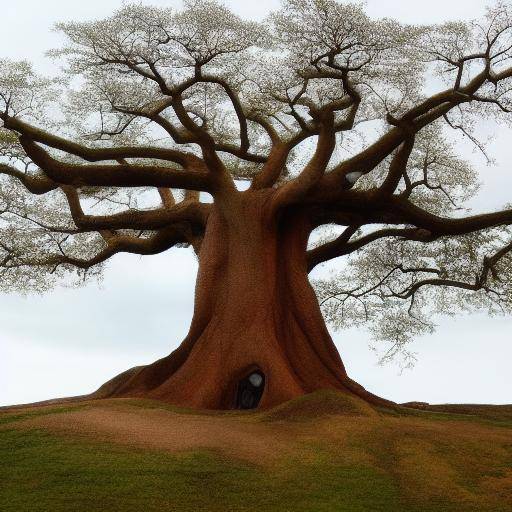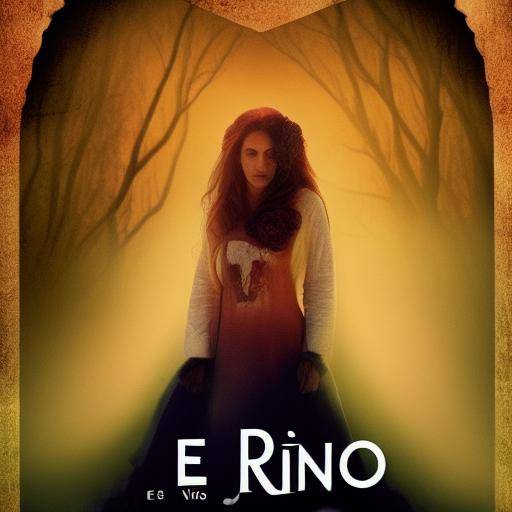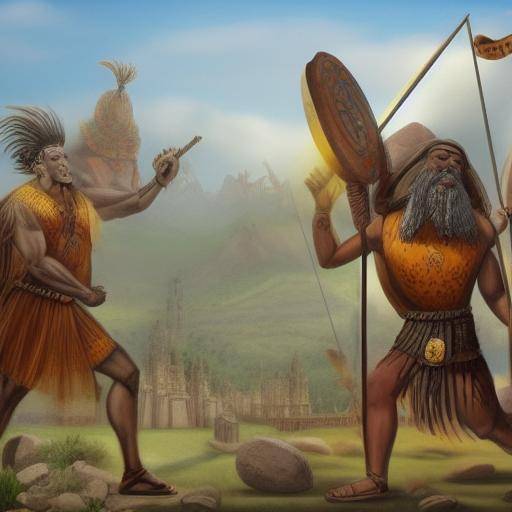
A look at the Nordic mythology and its timeless symbolism
Nordic mythology awakens the curiosity of millions of people around the world. His epic stories, intriguing deities and mystical symbols continue to captivate the imagination of generations. In this article, we will enter the fascinating world of Yggdrasil, the tree of life that occupies a central place in Nordic mythology. We will know its meaning, its history and its relevance in ancient Nordic culture and today. In addition, we will explore the connections between Yggdrasil, the Nordic myths and the concept of the tree of life in different cultures. Get ready for a journey in time and through the Nordic cosmology that will make you wonder.
Introduction
Nordic mythology is a treasure of epic stories that has left an indelible mark on history and culture. It includes a rich variety of gods, creatures, heroes and symbols, each with its own complex network of meanings. In the heart of this extensive cosmology is Yggdrasil, the majestic tree of life that connects the nine worlds of Nordic mythology. This sacred tree is much more than a simple metaphor; it represents the very structure of the universe and intertwines with life, death, destiny and rebirth.
History and Background
The history of Yggdrasil dates back to the era of ancient Nordic peoples, who considered it the central axis of their cosmos. This colossal tree, whose roots and branches extend through the divine and earthly kingdoms, symbolizes the interconnection of all aspects of existence. Over time, Yggdrasil has maintained its relevance in Nordic mythology, and its metaphor transcends cultures, inspiring works of art, literature and philosophical reflections to this day.
Origins and Meaning
Yggdrasil, whose name is translated as the "horse of terror", is a physical and symbolic representation of the cosmic order and the cyclical nature of reality. According to the Nordic myths, its three roots extend to Asgard (the kingdom of the gods), Jotunheim (the kingdom of the giants) and Niflheim (the kingdom of fog and cold), while its cup rises over the heavenly kingdom of Ásgarðr.
Historical Evolution and Relevance
Throughout Nordic history, Yggdrasil has played a crucial role as a symbol of connection and balance between the different realms and cosmic forces. It is attributed to the maintenance of the stability of the universe and the harmonious flow of life and death. This sacred tree was so fundamental to the conception of the Nordic world that its influence transcended the religious sphere and became a powerful cultural symbol.
Legacy and Perdurability
Despite the gradual decline of the ancient Nordic religion, the legacy of Yggdrasil endures in Scandinavian cultural heritage and its influence extends to fields as diverse as art, literature, music and contemporary spirituality. As the Nordic mythology continues to gain popularity in global popular culture, the figure of Yggdrasil gains new relevance, capturing the imagination of people of all ages and cultures.
Deep analysis
Symbolism and Explanation
Yggdrasil's symbolism is vast and multifaceted. Its roots, which connect the different realms, represent the interdependence of the different aspects of existence. Its branches, which shelter and sustain countless mythological creatures, symbolize the connection between different beings and the diversity of life. As a whole, Yggdrasil personifies cosmic harmony, the interconnection of all existence and the continuity of the cycle of life.
Cultural and Social Impact
The influence of Yggdrasil in contemporary culture goes beyond its mere status as a mythological symbol. His resonance in art, literature, music and contemporary spirituality bears witness to his lasting symbolic power. Moreover, its presence in various forms of artistic expression demonstrates its ability to evoke deep reflections on nature, life, death and destiny.
Transcultural Connections
Although Yggdrasil is a symbol rooted in the Nordic mythology, its concept of a cosmic tree that connects different planes of existence has parallels in other cultures and traditions. This convergence of symbolism reveals a universal aspect in human search for understanding the ultimate nature of reality and its role in the cosmos.
Exhaustive analysis
Yggdrasil and the Tree of Life
The concept of the tree of life is recurrent in multiple cultures and mythologies around the world. The representation of a tree as the axis of the world and the source of life is found in ancient civilizations, symbolizing the connection between the heavenly, earthly and infernal realms. This coincidence allows us to appreciate the universality of the archetypal image of the tree of life and its impact on the human worldview.
Nordic Myths and the Virtues of the Tree of Life
Nordic mythology enriches the conception of the tree of life with its emphasis on the interconnection of different worlds and cycles of destruction and rebirth. Likewise, the Nordic vision of the tree of life reflects the complexity of human existence, where the duality of life and death is intertwined intrinsically.
The Contemporary Meaning of the Tree of Life
In contemporary society, the concept of the tree of life continues to resonate in various spheres, from spirituality and philosophy to ecology and sustainability. The metaphor of the tree of life remains an inexhaustible source of inspiration to reflect on the interconnection of all forms of life and the preservation of ecological balance.
Conclusions
In short, Yggdrasil, the tree of the life of Nordic mythology, transcends its function as a mere symbol. Its influence encompasses both the historical past of Nordic culture and the globalized present. The archetypal interconnection of Yggdrasil with the tree of life of other cultural traditions underlines its evocative universality. While its roots sink into the Nordic mythology, its cup rises over a vast conceptual landscape shared by humanity throughout the time.
Frequently asked questions
What is the meaning of Yggdrasil in Nordic mythology?
According to the Nordic mythology, Yggdrasil is the cosmic tree that connects the nine worlds, symbolizing the structure of the universe and the interconnection of life, death and destiny.
What is Yggdrasil's relationship with the Nordic myths?
Yggdrasil is a central element in the Nordic myths, representing the integrity of the cosmos and the harmony between the different divine and earthly kingdoms.
What is the meaning of the tree of life in contemporary culture?
Today, the concept of the tree of life remains a source of inspiration to reflect on the interconnection of all forms of life, sustainability and the preservation of ecological balance.
Why is the tree of life a recurring symbol in different cultures?
The tree of life is a recurring symbol because of its ability to represent the connection between the heavenly, earthly and infernal realms, as well as life, death and rebirth, universal concepts in human worldview.
What is the importance of Yggdrasil in the contemporary context?
Yggdrasil remains relevant in the contemporary context by inspiring deep reflections on nature, life, death and destiny, and by contributing to the enrichment of global culture through its presence in various forms of artistic expression.
What are the parallels between Yggdrasil and the concept of the tree of life in other cultures?
The parallels between Yggdrasil and the tree of life in other cultures lie in their representation as the axis of the world and the source of life, as well as in their universal symbolism of interconnection and balance.
How has Yggdrasil's symbolism evolved over time?
Yggdrasil's symbolism has evolved to transcend its mere status as a mythological symbol, influencing art, literature, music and contemporary spirituality, demonstrating its ability to adapt and resonate in different cultural contexts.
What is the importance of Yggdrasil in our understanding of nature and cosmos?
Yggdrasil plays a fundamental role in our understanding of nature and cosmos by representing the interconnection of all manifestations of existence and in incarnating cosmic harmony and the continuity of the cycle of life.
With this thorough exploration of Yggdrasil, the Nordic myths and the symbol of the tree of life, we hope to have provided an enriching and stimulating analysis that allows us to discover the depth and universality of these ancient and lasting conceptions.



